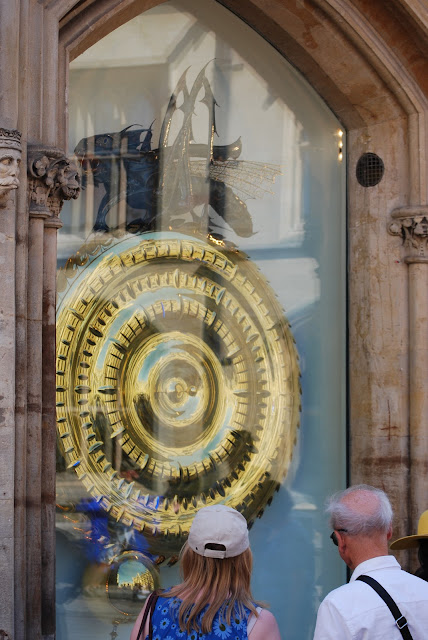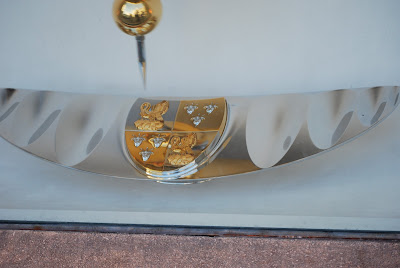Sitting in a window of the Taylor Library at the junction of Bene't Street and Trumpington Street in Cambridge is an absolutely amazing clock.
I'm not going to get into its history, its mechanism, or any of that here. You can find out everything you could possibly want to know about this work of mechanical engineering, including a 14-second video of it at work, over on Wikipedia at https://en.wikipedia.org/wiki/Corpus_Clock And I will admit, standing there and just watching the clock, with the lights rotating around the face, the movement of the grasshopper at the top, and the swinging of the pendulum below, can be mesmerizing.
But no, because this is a blog about heraldry, I'm going to show you the bottom of the clock's pendulum and the coat of arms immediately below it.
I've included two pictures here, because you can see the movement of the pendulum.
The arms, of course, are those of Corpus Christi College, which we have seen before in the Cambridge Union Building and on the façades of the Sedgewick Museum of Earth Sciences and the Cambridge train station.
The College was the result of a union in 1350 of two guilds, Corpus Christi and the Blessed Virgin Mary. Until the Reformation, the College used the shields of two guilds next to each other, but as some people saw too much "Popery" in those, a new coat of arms was sought.
The arms of the College, granted in 1570, are blazoned as: Quarterly: 1 and 4, Gules a pelican in its piety argent; 2 and 3, Azure three lily flowers argent.
All in all, the clock is an amazing piece of work, and the arms below the pendulum are one of the finest examples of the jeweler's art that I have seen.













No comments:
Post a Comment